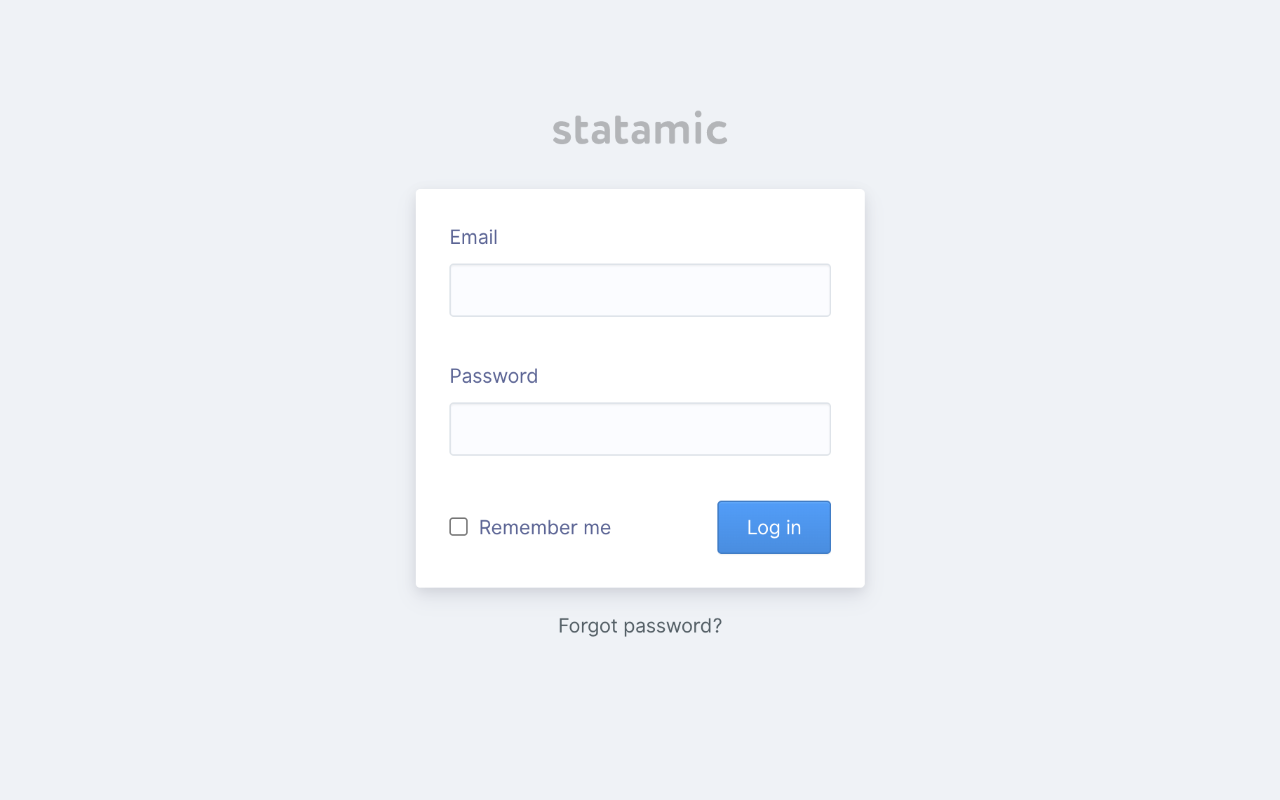Dynamic user data for your static sites.
If you’ve ever wanted to add a sprinkle of user data to your static sites, Silhouette is for you.
Installation
-
Pull in the package via Composer
composer require pattern/silhouette -
Publish the config file
php artisan vendor:publish --provider=Pattern\Silhouette\ServiceProvider -
If you are using the Eloquent driver for your users, add your user model into your
.envfileSILHOUETTE_ELOQUENT_MODEL=App\User
Usage
Note: Silhouette relies on AlpineJS to work its magic. If you haven’t already included Alpine in your project, you’ll need to do that.
{{ silhouette attributes="name,email,initials,avatar" }} {{ silhouette:auth }} {{ silhouette:name }} {{ silhouette:email }} {{ silhouette:attribute }} ... {{ /silhouette:auth }} {{ silhouette:guest }} Content you would want a guest to see. {{ /silhouette:guest }}{{ /silhouette}}It all starts with the {{ silhouette }} tag pair. The attributes parameter is optional; by default Silhouette will attempt to return your user’s name, email address, initials, and avatar.
Any content inside of the {{ silhouette:auth }} tag pair will only show if a user is authenticated. Inside of this tag pair you have access to either the default attributes or those you specified in the attributes parameter.
Likewise, any content inside of the {{ silhouette:guest }} pair will only show if your visitor is not an authenticated user.
Advanced Usage
As stated above, Silhouette uses AlpineJS to fetch and display your user’s data. It’s a great way to sprinkle interactivity throughout your website without committing to a larger framework like React or Vue (or Svelte or Elm or Angular or… oh geez), but there is a slightly more advanced use case that might trip some people up: nested x-data objects.
If, for instance, you’d like your users to be able to click on their avatar to toggle an ‘Account’ menu, you might do something like this:
{{ silhouette }} {{ silhouette:auth }} <div x-data="{ show: false }"> <button x-on:click="show = !show"> <img src="{{ silhouette:avatar }}" </button> <template x-if="show"> <nav> <p>Welcome, {{ silhouette:name }}</p> <a href="/account">Account</a> <a href="/logout">Logout</a> </nav> </template> </div> {{ /silhouette:auth }} {{ silhouette:guest }} <nav> <a href="/login">Login</a> </nav> {{ /silhouette:guest }}{{ /silhouette }}The problem with this approach is that because of the way Silhouette works, you’ve just nested a new x-data context that is not aware of the silhouette object.
Alpine provides a way (through events and listeners) to communicate data across components (or even, as is the case here, within nested components). To get the above example to work, we need to add the silhouette object to our x-data and listen for changes to the parent’s silhouette object (via an x-on directive):
{{ silhouette }} {{ silhouette:auth }} <div x-data="{ show: false, silhouette: {} }" x-on:silhouette.window="silhouette = $event.detail"> <button x-on:click="show = !show"> <img src="{{ silhouette:avatar }}" </button> <template x-if="show"> <nav> <p>Welcome, {{ silhouette:name }}</p> <a href="/account">Account</a> <a href="/logout">Logout</a> </nav> </template> </div> {{ /silhouette:auth }} {{ silhouette:guest }} <nav> <a href="/login">Login</a> </nav> {{ /silhouette:guest }}{{ /silhouette }}Credits
Many thanks to Mike Martin for the excellent idea and some early testing.
License
Licensed under the MIT license, see LICENSE for details.



